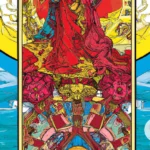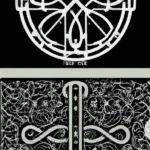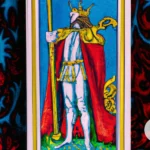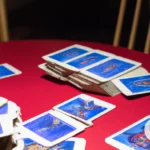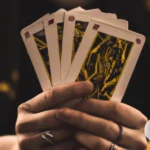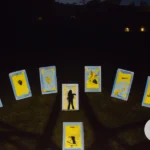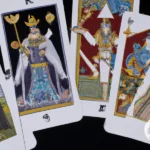Perhaps one of the most confounding aspects of tarot reading is interpreting reversed court cards. These special cards are known for their ability to add layers of complexity to a reading, revealing the shadow side of a person’s personality, or indicating obstacles that may arise in their path. But how do these cards differ from their upright counterparts, and what makes them so significant in a tarot spread? In this article, we will explore the impact of reversed court cards in tarot readings, examining how they can affect the four suits, and delving into specific cards that hold particular meaning when reversed. We will also provide tips on how to shuffle and interpret reversed court cards, so that you can integrate them seamlessly into your own tarot practice.
What are Reversed Court Cards?
In a tarot deck, court cards refer to the face cards that depict personalities and characters. These cards represent a specific set of traits and characteristics that can have different meanings and interpretations depending on the context of the reading. Court cards are divided into four suits: Wands, Cups, Swords, and Pentacles.
When a court card appears reversed in a tarot reading, it means that its traditional meaning and interpretation is inverted or blocked in some way. Essentially, when a court card is drawn reversed, the attributes associated with it take on a negative or opposite effect. The reversed position of the court card can mean that the person is struggling or experiencing a difficult time in relation to the qualities and personality associated with the card.
For example, if the Queen of Cups is drawn upright, it represents kindness, intuition, and emotional stability. However, if the same card is drawn reversed, it might suggest that the person is overly emotional, manipulative or struggling to understand their emotions.
Reversed court cards can be challenging to interpret because they require a deeper understanding of how the traits of the card interact with each other, both in the upright and reversed position. However, proper interpretation of the reversed court card can provide valuable insight into the individual’s personality, behavior, and life circumstances.
It’s essential to note that one should not take the reversed position of a court card as an inherently negative occurrence. Instead, it serves as a warning to be mindful of any areas in their life where they need to exercise caution or seek balance. In some cases, reversed court cards can indicate the need for the person to adjust their course and overcome obstacles that might be blocking their progress towards their goals.
Understanding the reversed court cards’ meanings is crucial for accurate tarot readings. One can get familiar with the court cards and their specific traits and characteristics by studying different resources, such as court card titles and symbolism and how to memorize court card meanings.
How to Interpret Reversed Court Cards
When it comes to interpreting reversed court cards in a tarot reading, there are a few key considerations to keep in mind. Firstly, it’s important to note that reversed court cards generally represent a blocked or distorted energy related to the personality traits, behaviors, and characteristics associated with that card. However, the specific implications of a particular reversed court card will depend on a variety of factors, including the suit of the card, its position in the spread, and the question or issue being addressed.
One approach to interpreting reversed court cards is to consider their “shadow side” or negative aspects. For example, a reversed King of Swords may indicate a misuse of power or a tendency towards manipulative or controlling behavior. A reversed Queen of Wands, on the other hand, might suggest an imbalance in one’s creative energy, leading to either burnout or creative blockages.
Another useful strategy when interpreting reversed court cards is to consider the ways in which their energy is being blocked or inhibited. For instance, a reversed Knight of Cups may indicate a struggle to navigate and express one’s emotions, leading to confusion or anxiety in personal relationships. A reversed Page of Pentacles, meanwhile, may suggest a lack of focus or direction in one’s pursuit of a particular goal or ambition.
Of course, the meaning of a reversed court card can also be influenced by its position in a particular tarot spread. For example, a reversed court card in the “challenges” position may indicate a particular area of difficulty or resistance in the querent’s life, while a reversed court card in the “outcome” position may suggest a potential obstacle or blockage that could impact the final outcome of the situation.
In any case, it’s important to remember that reversed court cards in a tarot reading should be interpreted with a sense of openness and curiosity, rather than fear or alarm. They offer valuable insights and guidance into the complex interplay between personality, behavior, and circumstance, and can help the querent gain a deeper understanding of their current situation and potential paths forward.
To further deepen your understanding of court cards in tarot readings, you can check out our articles on tarot spreads featuring court cards, interpreting court cards in the context of relationships, the symbolism and titles of court cards, and the relationship between court cards and personality/behavior.
The Significance of Reversed Court Cards in Tarot Readings
When performing a tarot reading, reversed court cards can carry significant meanings and add a layer of complexity to the reading. The reversed position of the card indicates that the energy of the card is blocked or inverted, affecting its interpretation. It is essential to interpret reversed court cards in the context of the question asked and the position in which the card appears in the reading.
Reversed court cards may indicate a range of outcomes, including an obstacle in personal growth or a challenge in relationships with others. They may also signify the energy of the card being expressed negatively or a need for reassessment or reflection. Alternatively, they can indicate an external force or person affecting the reading, such as an adversary or frenemy.
It is important to note that not all reversed court cards indicate negativity, and the interpretation may vary depending on the context of the reading. In some cases, a reversed court card may suggest a need for a change in perspective, offering an opportunity for growth and learning.
One must interpret reversed court cards with caution as they require a deeper understanding of the symbolism and meanings associated with the specific card and the surrounding cards. While they may represent a challenge or setback, reversed court cards can also be an opportunity to explore and embrace ambiguity, expanding personal growth and spiritual insight.
A careful and thoughtful interpretation of reversed court cards can enrich and deepen the overall tarot reading experience.
The Impact of Reversed Court Cards on the Four Suits
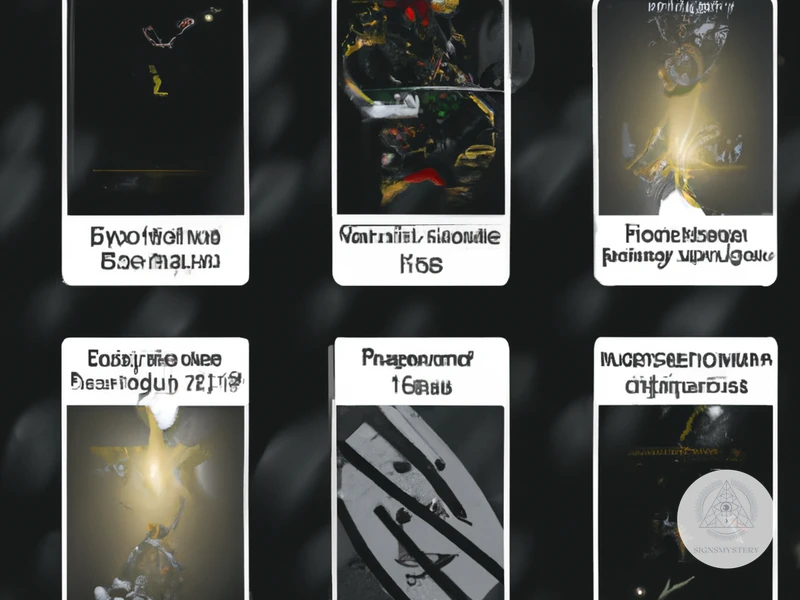
In tarot readings, the court cards represent people and personalities in our lives. When these cards appear reversed, there can be a significant impact on the interpretation of the reading.
The Impact of Reversed Court Cards in the Suit of Wands
The suit of Wands is associated with creativity, passion, and action. The reversed court cards in this suit indicate a lack of creative energy, a failure to take action, and a lack of motivation. For example, the reversed King of Wands could represent a leader who has lost his or her passion, while the reversed Queen of Wands could indicate a lack of confidence or insecurity.
The Impact of Reversed Court Cards in the Suit of Cups
The suit of Cups is associated with emotions, relationships, and inner feelings. When the reversed court cards appear in this suit, it can indicate a lack of emotional maturity or an inability to express one’s feelings. For example, the reversed King of Cups might represent a person who is emotionally distant or cut off from their feelings, while the reversed Queen of Cups could indicate a lack of empathy or compassion.
The Impact of Reversed Court Cards in the Suit of Swords
The suit of Swords is associated with intellect, communication, and conflict. Reversed court cards in this suit can indicate a lack of clear thinking or communication, as well as issues with conflict resolution. For example, the reversed King of Swords might represent a person who is stubborn or closed-minded, while the reversed Queen of Swords could indicate a tendency towards harsh or critical communication.
The Impact of Reversed Court Cards in the Suit of Pentacles
The suit of Pentacles is associated with money, material possessions, and practicality. The reversed court cards in this suit may indicate issues with finances or a lack of practicality. For example, the reversed King of Pentacles might represent a person who is financially unstable or reckless with money, while the reversed Queen of Pentacles could indicate a lack of nurturing or practicality in the home.
Understanding the impact of reversed court cards on the four suits is important for interpreting tarot readings accurately. Each reversed court card offers its own unique insight into the individual or situation being analyzed, and must be carefully considered in conjunction with the other cards in the spread.
The Impact of Reversed Court Cards in the Suit of Wands
Wands in Tarot represent creativity, ambition, and energy. When reversed, these qualities can manifest in different ways, depending on the specific Court Card being examined.
The Page of Wands Reversed can suggest that one’s creative endeavors may be stifled or that self-expression may be limited. It may also indicate a lack of inspiration or motivation, causing projects or goals to become stagnant.
The Knight of Wands Reversed warns against recklessness in one’s pursuits, as impulsive actions may lead to negative consequences. It could also signify a lack of direction, with energy being scattered without clear goals in mind.
The Queen of Wands Reversed may indicate a need to balance personal power with a willingness to collaborate and share control. It can also suggest that there may be obstacles in one’s creative endeavors, such as self-doubt or a lack of confidence.
The King of Wands Reversed signifies a potential misuse of power or authority, leading to a domineering or controlling attitude. It may also suggest that there is a lack of maturity or responsibility in one’s leadership abilities, leading to friction and tension within a group or organization.
The reversed Court Cards in the Suit of Wands can indicate a need for balance, direction, and self-reflection in one’s creative pursuits and energetic endeavors. When appearing in a reading, it is important to consider the specific card and its position to understand the full impact.
The Impact of Reversed Court Cards in the Suit of Cups
When it comes to the suit of Cups, which represents emotions, relationships, and creativity, reversed court cards can greatly impact Tarot readings. The suit of Cups is associated with the element of water, which can sometimes be turbulent and unpredictable. When a court card in this suit appears reversed, it can indicate a lack of emotional balance or instability in relationships.
The Page of Cups Reversed could indicate immaturity or emotional manipulation. This individual may struggle to express their emotions effectively, leading to misunderstandings and difficulty forming close connections.
The Knight of Cups Reversed may represent a lack of commitment or a tendency to be led solely by emotion. They may have trouble making rational decisions or struggle to take concrete steps towards their goals.
The Queen of Cups Reversed can indicate emotional insecurity or a tendency to be overly emotional. This individual may struggle to manage their emotions effectively and may be prone to frequent mood swings.
Finally, the King of Cups Reversed can symbolize emotional imbalance or unhealthy emotional patterns. This individual may struggle to regulate their emotions and may be prone to outbursts or irrational decision-making.
When a reversed court card appears in a spread, it is important to consider not only its individual meaning but also its position in relation to the other cards. The surrounding cards may provide additional insight into the root cause of the emotional turmoil indicated by the reversed court card.
Reversed court cards in the suit of Cups can indicate emotional instability, insecurity, and irrationality. These cards may prompt a deeper exploration of one’s emotional landscape and relationships.
The Impact of Reversed Court Cards in the Suit of Swords
In tarot readings, the Suit of Swords is often associated with the element of air, and it represents the realm of thoughts, intellect, and communication. When reversed court cards appear in this suit, they can indicate a disruption or lack of clarity in these areas.
The King of Swords Reversed: When the King of Swords appears reversed, it may indicate a misuse of power and authority. This card can suggest a lack of integrity and moral judgment, as well as an inability to communicate effectively. In a tarot reading, this card can be a warning to be mindful of how you express yourself and use your authority.
The Queen of Swords Reversed: The Queen of Swords reversed can indicate a lack of empathy and coldness in communication. This card suggests a need for compassion and understanding, rather than a strict adherence to logic and reason. In a tarot reading, this card can suggest that it is important to integrate both intellect and emotional intelligence in your decision-making process.
The Knight of Swords Reversed: The Knight of Swords reversed represents a lack of focus and direction in one’s actions. This card can suggest impulsiveness and recklessness, rather than thoughtful consideration. In a tarot reading, this card can indicate a need to be more deliberate and intentional in your decisions.
The Page of Swords Reversed: The Page of Swords reversed can indicate a lack of curiosity and an unwillingness to learn. This card suggests a need for open-mindedness and a willingness to engage with new ideas and perspectives. In a tarot reading, this card can suggest a need to approach situations with an open and curious mind.
Reversed court cards in the Suit of Swords can indicate a lack of clarity and focus in one’s thoughts and actions. They can also suggest a need to integrate both intellect and emotional intelligence, as well as a willingness to approach situations with an open mind. In a tarot reading, it is important to take note of these reversed court cards and their meanings to gain a deeper understanding of the current situation.
The Impact of Reversed Court Cards in the Suit of Pentacles
The suit of Pentacles is often associated with material wealth, financial stability, and tangible resources. However, when reversed court cards appear in a reading, their impact can be quite significant.
The Page of Pentacles Reversed: When the Page of Pentacles appears reversed in a reading, it can indicate a lack of focus or commitment towards material goals. It may also suggest a missed opportunity for financial growth or a failure to properly invest in one’s own skills, education, or career.
The Knight of Pentacles Reversed: In a reversed position, the Knight of Pentacles can indicate a lack of progress or movement towards financial goals, as well as stubbornness or a reluctance to take risks. It may also suggest a need to reassess one’s financial priorities or adapt to changing circumstances.
The Queen of Pentacles Reversed: When the Queen of Pentacles appears reversed, it can signify a loss or imbalance of material resources, as well as a tendency towards materialism or overindulgence. It may also suggest a need for greater self-care and attention to one’s own physical and financial well-being.
The King of Pentacles Reversed: In a reversed position, the King of Pentacles can indicate a loss or mismanagement of financial resources, as well as a lack of responsibility or accountability in matters of material wealth. It may also suggest a need for greater humility or a reassessment of one’s values and priorities.
The impact of reversed court cards in the suit of Pentacles can vary greatly depending on the specific card and the context of the reading. However, they often suggest a need for greater focus, adaptability, and responsibility in matters of material wealth and resources. When interpreting these cards, it is important to consider their relationship to other cards in the reading and to approach each situation with an open mind and a willingness to learn and grow.
Specific Reversed Court Cards and Their Meanings
When it comes to reversed court cards in tarot readings, each card has a unique meaning that can add depth and nuance to your interpretation. Let’s take a closer look at a few specific reversed court cards and their significance.
The King of Swords Reversed: What It Means and Its Significance
The King of Swords reversed can suggest a lack of clarity or confusion in one’s thoughts or decision-making process. This could manifest as indecisiveness or a tendency to overanalyze things. In relationships or partnerships, this card can represent communication issues or power struggles. It may be a sign to take a step back and reassess the situation before moving forward.
The Queen of Wands Reversed: What It Means and Its Significance
When the Queen of Wands is reversed, it can indicate a lack of confidence or self-esteem. This could lead to difficulties in asserting oneself or setting boundaries. It may be a time to focus on building self-confidence and independence. In a relationship context, this card can suggest a need for balance and equality in the partnership.
The Knight of Cups Reversed: What It Means and Its Significance
The Knight of Cups reversed can symbolize emotional instability or a tendency towards mood swings. This card could indicate a need to address and manage one’s emotions in order to find greater stability and balance in life. In relationships, it may be a sign of a lack of emotional maturity or a tendency to become overly dramatic or emotional.
Whether you’re conducting a reading for yourself or someone else, understanding the meanings of these particular reversed court cards can help you gain a deeper insight into the situation at hand.
It’s also important to keep in mind that the significance of a reversed court card can vary depending on the question being asked, the other cards in the spread, and the intuition and experience of the reader. As with any tarot reading, context is key.
The King of Swords Reversed: What It Means and Its Significance
When the King of Swords appears reversed in a tarot reading, it suggests a lack of clarity, dishonesty, or a tendency towards cruelty in communication. This card often represents someone who is overly critical, manipulative, or controlling in their interactions with others. The negative qualities of the King of Swords reversed may manifest in a variety of situations, from a contentious family member to an adversarial coworker to an untrustworthy partner.
In addition to its negative connotations, the reversed King of Swords can also indicate a sense of weakness or indecisiveness. The typical traits of clear communication, rational thinking and impartiality associated with this card are turned upside down, resulting in confusion, poor judgment, and a tendency towards irrational thoughts and decisions.
Like all reversed court cards, the King of Swords reversed possesses a unique significance in the tarot. It is a warning to the querent, a call to beware of the traits embodied by this card and to
Subscribe to Our Newsletter
Sign up to receive the latest news and updates.
When interpreting the King of Swords reversed in a tarot reading, it is important to consider the surrounding cards, as well as the position and overall theme of the spread. The querent should keep in mind that even a difficult tarot reading can provide valuable insight into their current situation, and the guidance offered by the cards can help them navigate their way towards a more positive future.
The Queen of Wands Reversed: What It Means and Its Significance
When the Queen of Wands appears reversed in a tarot reading, it indicates a lack of self-confidence and a loss of motivation. This is in stark contrast to the upright version of this court card, which represents one’s self-assurance, vitality, and zest for life.
The Queen of Wands reversed suggests that the querent may be feeling insecure about their abilities or their place in the world. They may lack the self-esteem to pursue their goals, or they may feel that their creative energy has dissipated.
Additionally, this card can suggest that the querent is not taking care of themselves physically or emotionally. They may be neglecting their health, or they may be hindering their own progress by engaging in self-destructive behaviors.
In some cases, the reversed Queen of Wands can symbolize a manipulative or controlling individual, someone who uses their charisma to exploit others for their own benefit. This person may be hindering the querent’s progress, or they may be causing them to doubt their own abilities.
The significance of the Queen of Wands reversed in a tarot reading is clear – it represents a loss of confidence, energy, and drive. When this card appears, it is important to take stock of one’s own emotional and physical well-being, and to seek out the support and guidance of others if necessary.
The Queen of Wands reversed suggests that the querent may be facing a challenging period of self-doubt and uncertainty. But by recognizing these negative patterns and taking proactive steps to address them, they can begin to move forward with renewed energy and confidence.
The Knight of Cups Reversed: What It Means and Its Significance
When the Knight of Cups appears in a Tarot reading, the focus is on creativity, romance, and emotional growth. This card represents someone who is passionate and adventurous, following their heart wherever it takes them. However, when the Knight of Cups is reversed, it can indicate that this energy is blocked or misguided.
In a Tarot reading, the reversed Knight of Cups can symbolize:
- A lack of direction or clarity in your emotional life
- A tendency towards impulsiveness or recklessness
- Difficulty expressing or processing emotions
- A need for greater self-awareness before pursuing relationships or creative projects
When the Knight of Cups is reversed, it’s important to take a step back and evaluate why you may be feeling stuck or uncertain. It’s possible that you’re not being true to yourself, or that you’re pursuing something for the wrong reasons. This card can be a warning to slow down and listen to your intuition before making any big decisions.
Some ways to interpret the reversed Knight of Cups in combination with other cards include:
- If the reversed Knight of Cups appears next to the Lovers card, it may indicate a romantic decision that is not in your best interest.
- If the reversed Knight of Cups appears with the Four of Cups, it can signify a need to reflect on your emotional state and take time for self-care.
- If the reversed Knight of Cups appears with the Ace of Swords, it may indicate a tension between emotional and intellectual pursuits.
The Knight of Cups reversed is a potent reminder to slow down, evaluate your motives, and be true to yourself. While the reversed card can sometimes feel disconcerting, it serves an important role in helping you gain greater self-awareness and emotional clarity.
How to Incorporate Reversed Court Cards in Your Tarot Readings
When it comes to tarot readings, the appearance of reversed court cards can add a new layer of meaning to the cards drawn. So how can you incorporate reversed court cards into your tarot readings? Let’s explore two important aspects: shuffling and drawing the cards, as well as interpreting them in combination with other cards.
How to Shuffle and Draw Reversed Court Cards
Shuffling and drawing reversed court cards is no different than shuffling and drawing upright court cards. Simply shuffle the deck as usual and draw the cards one at a time. If a court card is drawn reversed, set it aside facing upwards. Some readers shuffle the deck in a particular way to ensure that reversed cards are evenly distributed throughout the spread. There’s no one right way to do this, so find a method that works for you.
Ways to Interpret Reversed Court Cards in Combination with Other Cards
Interpreting reversed court cards in combination with other cards in a reading is a bit more complex. One approach is to consider the characteristics of the suit and the specific court card, and then apply the opposite or inverted meaning. For instance, if the upright Queen of Wands represents creativity, confidence, and passion, then the reversed Queen of Wands might suggest a lack of inspiration or self-doubt. However, this approach can sometimes feel limiting, as it doesn’t take into account the context of the other cards in the spread.
Another approach is to view reversed court cards as indicating obstacles or challenges to the qualities represented by the card. For example, the upright Knight of Cups might represent romantic pursuit and emotional vulnerability, while the reversed Knight of Cups might suggest a failure to connect emotionally or a struggle to express feelings.
Lastly, some tarot readers view reversed court cards as simply indicating a lessened or weakened version of the qualities represented by the upright card. For example, the upright King of Swords might represent clear thinking and logic, while the reversed King of Swords might suggest confusion or indecision.
In the end, the interpretation of reversed court cards will depend on the reader’s individual style and intuition, as well as the context of the spread and the other cards at play. With time and practice, incorporating reversed court cards into tarot readings can add a valuable layer of depth and insight.
How to Shuffle and Draw Reversed Court Cards
To shuffle and draw reversed court cards in a tarot reading, there are a few steps to follow. First, it’s important to ensure that the deck is thoroughly shuffled in a way that feels comfortable to the reader. This could involve shuffling the cards face down and mixing them up randomly or cutting the deck several times.
Once the deck is shuffled, the reader can begin drawing cards for the tarot reading. To draw reversed court cards deliberately, one option is to turn the cards over as they are drawn to indicate a reversed position. Alternatively, if the reader prefers to let the cards fall naturally as they are drawn, some cards may end up being reversed naturally.
Regardless of the reader’s preferred method for drawing reversed court cards, it’s important to pay attention to the position of each card and consider its meaning in relation to the overall reading. Reversed court cards can often indicate internal struggles or conflicting energies within a situation, so it’s worth taking the time to reflect on what each card means in context.
It’s also worth noting that some readers may choose not to use reversed cards at all in their readings, while others may choose to only incorporate them in certain situations or spreads. Ultimately, the choice of whether to use reversed court cards and how to draw them is up to the individual reader and their personal preferences and practices.
When it comes to interpreting reversed court cards in a reading, it’s important to approach them with an open mind and consider their potential meanings in relation to the specific question or situation being explored. While a reversed court card may appear to indicate a negative or challenging energy at first glance, it’s important to remember that every card has multiple potential interpretations and should be considered in the broader context of the reading as a whole.
Ways to Interpret Reversed Court Cards in Combination with Other Cards
When interpreting reversed court cards in tarot readings, it’s important to consider the surrounding cards as well. Reversals can add layers of complexity and nuance to a reading, and when combined with other cards, they can provide valuable insights into a situation or question.
Opposing Energies
One way to interpret reversed court cards in combination with other cards is to look for opposing energies. If a reversed Queen of Cups appears alongside a card representing logic and reason, such as the King of Swords, it could suggest a clash of emotions and intellect. This could indicate a need to balance these opposing energies or to find a way to integrate them in a harmonious way.
Internal and External Influences
Another way to interpret reversed court cards is to consider their position in a spread. In a simple past-present-future spread, for example, a reversed Knight of Pentacles in the present position could suggest internal resistance to change, while a reversed King of Swords in the future position could indicate external conflicts or challenges to be faced.
Mirror Meanings
Reversed court cards can also mirror the meanings of surrounding cards. For example, a reversed Queen of Swords next to the Eight of Wands could suggest that communication is hindered or delayed, while a reversed King of Pentacles alongside the Ten of Pentacles could indicate financial setbacks or issues with stability.
Metaphorical Interpretations
Lastly, reversed court cards can also be interpreted metaphorically. For example, a reversed Knight of Cups could represent a lack of emotional maturity or a tendency to be overly emotional and impulsive, while a reversed Queen of Wands could indicate a need to reign in one’s fiery passions and take a more measured approach.
Incorporating reversed court cards into tarot readings can add depth and nuance to interpretations. By considering the surrounding cards and looking for opposing energies, internal and external influences, mirror meanings, and metaphorical interpretations, readers can gain valuable insights into the messages of the cards.
Conclusion
After exploring the impact of reversed court cards in tarot readings, it becomes clear that these cards can offer valuable insights into a person’s life. A reversed court card can symbolize a person who is experiencing an internal conflict or who is struggling with a particular aspect of their life.
It is important to remember that reversed court cards should not be viewed as solely negative or ominous. Rather, they represent a shift or reversal of the energy typically associated with the card. By understanding the meaning behind each reversed court card and how it may relate to a person’s specific situation, a tarot reader can offer guidance and insight that can help the person navigate their challenges.
As we have seen, each of the four suits holds a unique significance when it comes to reversed court cards. In the suit of wands, a reversed court card may suggest a lack of passion or motivation. In the suit of cups, it may point to issues surrounding emotional fulfillment. In the suit of swords, a reversed court card may indicate a need for clarity or decision-making, while in the suit of pentacles, it could signify financial burdens or insecurity.
Understanding the specific meaning behind each reversed court card is crucial for incorporating them into tarot readings. While they may seem daunting at first, reversed court cards can offer a unique perspective and deeper understanding of a person’s situation.
By shuffling and drawing reversed court cards intentionally and carefully, a tarot reader can help uncover hidden aspects of a person’s life and offer guidance that can help them move forward with clarity and confidence.
Overall, the impact of reversed court cards in tarot readings is significant. These reversed cards offer a unique perspective that can help a person gain deeper insight into their own life and the challenges they face. With careful consideration and interpretation, tarot readers can use reversed court cards to offer guidance and support that can help people navigate life’s twists and turns.
The Takeaway
It’s important to remember that reversed court cards in tarot readings can bring a different perspective to the reading. While upright court cards represent certain personalities or archetypes, reversed court cards can indicate a blockage or a need for deeper reflection in those areas. Additionally, the suit of the card can also impact its reversed meaning, as each suit has its own unique characteristics and energy.
When interpreting reversed court cards, it’s crucial to consider the context of the reading and the other cards in the spread. Don’t jump to conclusions based on the reversal alone but rather take a moment to reflect on how the card’s meaning may shift in combination with other cards.
Incorporating reversed court cards into your tarot practice can bring a greater depth and complexity to your readings. Experiment with different shuffling techniques or simply flip some cards over before shuffling to introduce reversed cards into your spreads. Remember to trust your intuition and allow your interpretation of reversed court cards to evolve and grow as you gain more experience with tarot.
Frequently Asked Questions
What do reversed court cards mean in tarot?
Reversed court cards indicate that the qualities of the court card are either blocked, delayed, or expressed in a negative manner.
Do I have to interpret reversed court cards in tarot readings?
Interpreting reversed court cards is optional, but it adds depth and nuance to your tarot readings.
How do I shuffle and draw reversed court cards in tarot?
You can shuffle and draw reversed court cards in tarot by mixing the deck face-down and flipping over any cards that end up reversed.
Are reversed court cards always negative in tarot readings?
Not necessarily. Reversed court cards may indicate challenges or delays, but they can also suggest opportunities for growth and development.
How do reversed court cards impact the four suits in tarot?
Reversed court cards have a unique impact on each of the four suits in tarot. They may amplify the negative or positive qualities of the suit’s energy.
Can I use reversed court cards in combination with other cards in tarot readings?
Absolutely. Reversed court cards can be combined with other cards to create more nuanced interpretations in tarot readings.
What is the meaning of the King of Swords reversed in tarot?
The King of Swords reversed in tarot may suggest a lack of clarity, dishonesty, or misuse of power.
What does the Queen of Wands reversed mean in tarot?
The Queen of Wands reversed in tarot may indicate a lack of passion, insecurity, or a need for validation from others.
What is the significance of the Knight of Cups reversed in tarot?
The Knight of Cups reversed in tarot may suggest emotional immaturity, moodiness, or deception.
Why should I incorporate reversed court cards in my tarot readings?
Using reversed court cards in tarot readings adds depth and nuance to your interpretations, allowing for a more nuanced understanding of the situation at hand.



